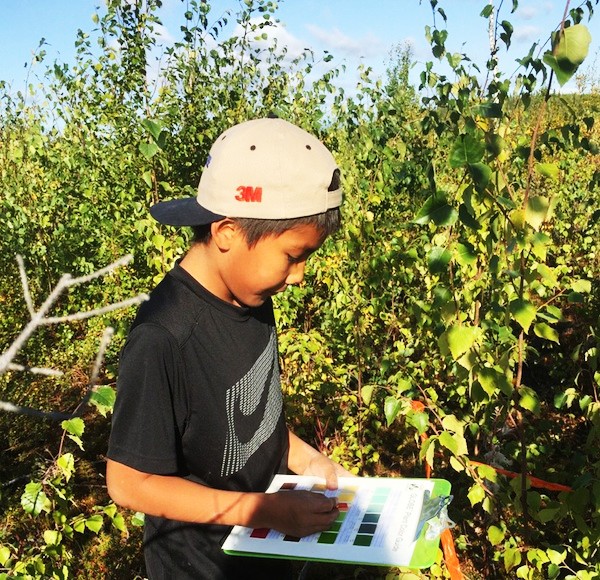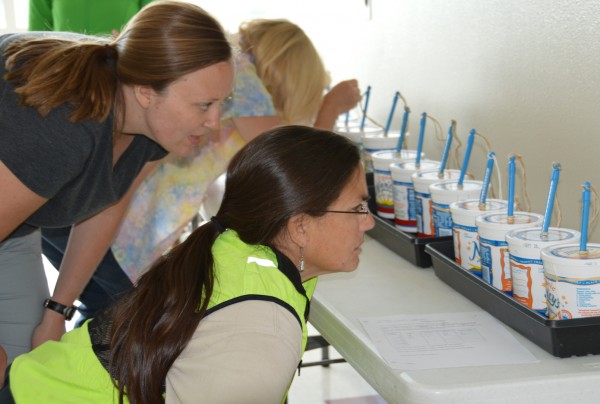Project engages public in climate change science
February 11, 2016
Yuri Bult-Ito
907-474-2462
A new project led by University of Alaska Fairbanks scientists and partners will engage
students and community members to examine effects of the changing climate.
Through a five-year, $3.5 million NASA grant, the project will allow current and future teachers,
4H leaders, K-12 and undergraduate students, and community members to interact with
NASA and other scientists and engineers. They will learn to investigate the effects
that shifting seasons have on their surroundings, such as vegetation, soils, hydrology,
infrastructure, livelihoods and communities.

Participants will complete an Earth science or climate change course offered in person and online. They will then learn to make on-the-ground observations using measurement protocols from the Global Learning and Observation to Benefit the Environment program. They will compare their data with satellite data provided by NASA and use traditional knowledge to evaluate climate change challenges.
“Adding local relevance and traditional knowledge into citizen-science learning can increase the benefit of citizen science for diverse communities,” said Elena Sparrow of UAF's International Arctic Research Center, who heads the project.
The activities will help participants identify the consequences of earlier springs, warmer and later falls, changing ice cover, and later freeze-up and earlier break-up of rivers and lakes.
In addition to developing online learning environments, the program will use mobile technologies. Both will make high-quality learning and science opportunities available to rural communities.
“A warming climate has changed the timing of seasons in the Arctic and elsewhere, and rural communities are most heavily impacted by the changing climate,” said Katie Spellman of IARC, who is also helping lead the project.
Through curriculum development and collaboration with scientists, educators and other partnerships in Alaska and beyond, the project will have robust participation in rural communities, which are under-represented in science, technology, engineering and mathematics learning.

“We are excited to work on this project,” Sparrow said. “Not only is the scope of collaboration unprecedented, but also our program is potentially a model for other educational settings at a national level.”
Research shows that educators in the U.S. are underprepared for teaching Earth system science and often teach it in isolation from other STEM subjects, according to Cindy Fabbri, another co-leader.
"This project will provide the learners real-world Earth science research experience through citizen science," Fabbri said. "Collaboration with scientists will improve educator and student knowledge as well as their science skills."
NASA awarded nearly $3.5 million to the project, called “Impacts and Feedbacks of a Warming Arctic: Engaging Learners in STEM using NASA and GLOBE Assets." The project group, consisting of UAF researchers, has partnered with NASA, GLOBE, 4H, the Association of Interior Native Educators, the North Slope Borough School District and others.
The GLOBE program offers students and the public the opportunity to participate in data collection and the scientific process and helps them understand the Earth system and global environment.
ADDITIONAL CONTACTS: Elena Sparrow, UAF International Arctic Research Center, 907-474-7699, ebsparrow@alaska.edu


